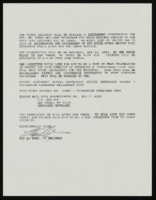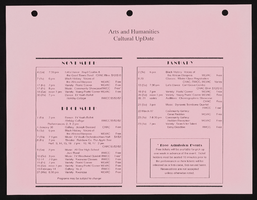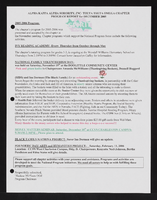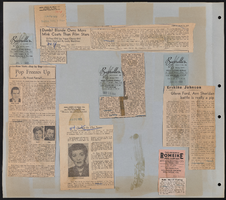Search the Special Collections and Archives Portal
Search Results
Neal, Joe, 1935-2020
Joseph M. Neal Jr. was born July 28, 1935. Senator Joe Neal shares many memories of his childhood in Mound, Louisiana. He recalls his mother leaving him and his older brother Willie with a woman named Bea so that she could go to Alexander to get a job. He and Willie were ages 2 and 4, respectively, and were frequently left on their own. Willie would leave periodically for hours at a time and come back with food. He eventually took Joe to meet the couple who were supplying the meals, Mary and Gowens Prayder.
Person
Peggie Kaltenborn Gambarana Photograph Collection
Identifier
Abstract
The Peggie Kaltenborn Gambarana Photograph Collection consists of color photographic prints from approximately 1970 to 1979. The images are portraits of Robert J. Kaltenborn, Peggie Kaltenborn Gambarana, and Eddie Gambarana.
Archival Collection

Mabel Hoggard: religious materials
Date
Archival Collection
Description
Folder of materials from the Mabel Hoggard Papers (MS-00565) -- Personal papers file. This file contains religious booklets, programs, newspaper clippings, and other documents. Represented in the materials are records from: Griffith United Methodist Church, Church Women United of Greater Las Vegas, Zion Methodist Church, Clark County Protestant Ministerial Association, and Desert Southwest Conference of the United Methodist Church.
Mixed Content

Alpha Kappa Alpha Sorority, Theta Theta Omega Chapter arts and humanities committee reports
Date
Archival Collection
Description
From the Alpha Kappa Alpha Sorority, Incorporated, Theta Theta Omega Chapter Records (MS-01014) -- Chapter records file.
Text

Alpha Kappa Alpha Sorority, Theta Theta Omega Chapter program committee reports
Date
Archival Collection
Description
From the Alpha Kappa Alpha Sorority, Incorporated, Theta Theta Omega Chapter Records (MS-01014) -- Chapter records file.
Text

Daniel A. Moore interview, March 3, 1979: transcript
Date
Archival Collection
Description
On March 3, 1979, Norwood Germany Jr. interviewed Daniel A. Moore (b. 1939 in Fort Worth, Texas) about his life in Las Vegas, Nevada. Moore begins by speaking about his move to Las Vegas from Utah at a young age, his education and his work in construction and at the Las Vegas McCarran Airport. Moreover, Moore speaks about his involvement with church and his recreational hobbies such as bowling. Moore also spends time speaking about the African American population in Las Vegas, the jobs available to them, racial tensions in his young adulthood versus his children’s experiences, and the segregation of black communities into the Las Vegas Westside. Lastly, he talks about the city’s growth, tourism and the economy, the development of different shopping centers and malls, and the city’s law enforcement.
Text



